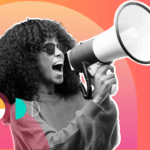By R. Larsson, Advertising Week
Black History Month can offer a poignant opportunity for brands to make a meaningful impact, without jumping on a bandwagon. Beyond the conventional marketing strategies and seasonal campaigns, businesses now have the chance to be catalysts of change, platforms for voices that have historically been marginalised. The challenge lies in understanding how to authentically celebrate Black voices during this month and, more importantly, how to ensure that this commitment transcends just the month and becomes an intrinsic part of a brand’s ethos.
In this article, we have spoken to industry experts about how brands can advertise authentically during Black History Month and how they can carry these principles of diversity and inclusion into their hiring practices, branding strategies and storytelling throughout the year. By embracing authenticity and long-term commitment, brands and agencies can become a force for positive change, echoing the sentiments of Black History Month far beyond October.
Mulenga Agley, Founder of Growthcurve
In today’s dynamic world, authenticity is the currency of resonance, especially in branding and advertising. As the CEO of Growthcurve, a Marketing Agency in charge of growing businesses in a variety of industries and markets around the world, I’ve observed that genuine representation isn’t just a trend—it’s a necessity. McKinsey’s ‘Diversity Wins – How Inclusion Matters’ report underscores this, revealing that companies with top-tier ethnic diversity in senior management outperformed their counterparts by a staggering 36% in profitability in 2019. Yet, the pace of progress is glacial; in the UK, 58% of companies still lack non-majority representation in executive teams. Brands must realise that diversity isn’t just a box to tick—it’s a business imperative.
There are a few things brands can be doing to provide a platform for Black Voices.
Tell Real Stories: For campaigns to be truly authentic it’s crucial that the work is led by a representative team throughout – from idea, to direction to sign off. If non-diverse teams run with ideas inspired by specific ethnicities or other cultures there’s a risk of subtle misinterpretation or an idea not quite carrying over correctly. Then the impact is lost entirely and you’re seen as just another brand that ‘just doesn’t get it’. Creative work that’s rooted in real experiences always delivers superior results. Benefiting from diversity doesn’t have to stop at Black History Month. Longer term, brands should consider how they are set up to ensure black talent is part of their success stories.
Go beyond traditional hiring norms: Implement blind recruitment processes to eliminate biases. Partner with universities and organisations that champion underrepresented groups, ensuring a diverse talent pipeline.
Mentorship programmes: Establish mentorship programmes where senior leaders actively mentor diverse junior talent. This not only fosters understanding and inclusion but ensures diverse future leaders.
Tom Ghiden, Managing Director at JOAN London
How brands can be a platform for Black voices during Black History Month’.
The often-asked question on October 1st is how can, or should, my brand authentically celebrate Black History Month. While I’m quick to advise that brands that have achieved modern legend status represent their diverse audiences at all times of year – I understand the desire to represent the black community in October more visibly.
For me, there are two fundamental rules to help brands be authentic in their BHM communications:
“Pass the Mic”
Namely, when telling black stories, having representation in your team can ensure authenticity. I’m not suggesting tokenism is the answer. However, when trying to represent a community’s culture, and the ways your brand can genuinely connect to these moments – it’s always done best when those who can speak to their own lived experience are in the room.
Recognise diversity in the black community
The black community, especially here in Britain, is not homogenous. It is diverse and varied in its own cultural experience. My lived experience is entirely different to someone whose parents are African immigrants, or the descendants of the Windrush generation. So, while BHM celebrates all of these individuals, the best campaigns are able to accommodate & acknowledge their individual histories and traditions.
Tain Joliffe, Diversity Strategy Director, RAPP
Black Lives Matter, #MeToo and other important social movements have shined a necessary light on social injustice, with the pandemic and cost-of-living crisis further magnifying inequality.
On many occasions, brands have been racing to keep up with shifting consumer attitudes towards these vital issues. Most brands’ attempts at being diverse and inclusive often unintentionally backfire, as they are unable to navigate the complexity required. This results in clichés and stereotypes being perpetuated, and customers are not only noticing, but they are also holding us accountable. As a queer woman, I know how I feel when I see brands clamouring to show up for my community during Pride Month, but where is their commitment to change all year round? This Black History Month, ask yourself, How is my brand showing up for the black community all year round? And not just in the lives represented in their advertising, but in the creative process, in company policy, and in the opportunities that are created by your organisation. When brands embrace diversity and inclusion and embed their practices into the fabric of their organisation and their communications, it can have a huge positive impact on brand reputation and customer loyalty! Because customers really want you to do better.







